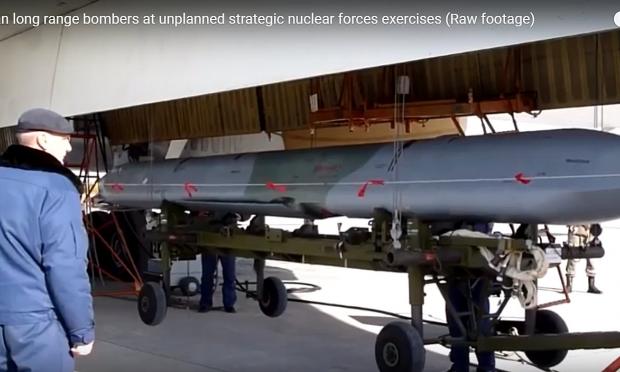Since the fall of the Soviet Union, independent Ukraine has long proven to be a valuable source of Soviet-designed hardware for the US military and the US Intelligence Community as part of so-called foreign material exploitation programs ( FME).
Overall, Ukrainian forces seizing Russian war materiel could have serious consequences for the Russian military and be a significant boon to its adversaries in Ukraine and elsewhere around the world, including the United States.
Images of the relatively intact remains of a Russian Kh-101 cruise missile have surfaced online, offering a remarkably clear picture of some of its features.
The Kh-101 was reportedly shot down by Ukraine's air defense forces in the country's central Vinnytsia region on January 26, according to a report from the Ukrainian Air Force.
It should be noted that the upgraded Tu-160M long-range strategic bombers and the Tu-95MSM strategic bombers carry the Kh-101. It is armed with a conventional warhead weighing between 400-450 kg. Warhead types include high-explosive, high-explosive-penetrating, and submunition warheads.
What do the latest images of the Kh-101 wreckage reveal?
The Kh-101 missiles are in the news for their high failure rate in long-range attacks against Ukrainian targets.
In the acquired missile, the hidden shape of the central part of the fuselage of the Kh-101 is visible. The projectile's pop-up wings are seen attached to the central body. However, its engine, which falls under the rocket after launch, appears to be missing.
The Kh-101's guidance system includes satellite and inertial navigation, which can be used either independently or together to guide the missile to its target.
The missile also has a radar-based terrain contour matching (TERCOM) capability, to fly to the target at a relatively low altitude, making the missile difficult to detect or intercept.
On top of all this is ObleskU, a Digital Area Correlation System (DSMAC) that uses an internal database of related terrain imagery for control to help guide the weapon to its targets. The DSMAC capability is also used on certain versions of the US Tomahawk.
The Kh-101 carries a section with a dozen circular holes in two symmetrical rows of six each. The purpose of these holes is not exactly clear. One possibility is that this is a dispenser for countermeasures.
The reports point to the similarity between the holes found on the Kh-101 and the countermeasure dispensers sometimes seen on air-target aircraft such as the US BQM-167 Skeeter, which were also used in actual combat operations during the US-led invasion. US in Iraq in 2003.
Ukraine's ongoing conflict has proven to be, at least in part, a treasure trove of intact samples of various advanced Russian weapon systems.
Ukrainian officials have dismantled these Russian weapons and so far, have brought to light the presence of many Western-made components in them, which include the Kh-101 ALCM.
According to a foreign media outlet, the Kh-101 also appears to be heavily dependent on foreign-made chips, as Ukrainian intelligence claimed to have found at least 35 US-made chips, including those made by Texas Instruments, Atmel Corp.
France will help Ukraine acquire the GM 200 radar from Thales
French Defense Minister Sebastien Lecornu, told his Ukrainian counterpart Oleksiy Reznikov, will buy Ground Master 200 radar system for Kyiv.
The Ground Master 200 (GM 200), a medium-range radar produced by the French company Thales Group, can provide launch and impact threat coordinates from multiple simultaneous threats. This radar is part of the Ground Master family (like GM400a, GM60, GM200 MM/A & MM/C).
The GM200 acts as an air surveillance gap filler or as a sensor for an air defense system. The GM200 also has a surface channel and a missile/artillery/mortar sensing and warning capability.



